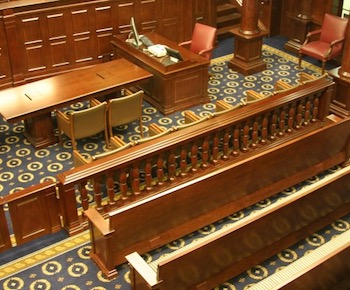Congress May Expand The Low-Income Housing Tax Credit. But Why?
The House-passed Tax Relief for American Families and Workers Act of 2024 would expand the largest federal subsidy program for construction of affordable housing, called the Low-Income Housing Tax Credit or LIHTC. But as designed, the program, which costs roughly $13.5 billion annually, is an inefficient and complex way to deliver housing assistance to low-income families.
Despite some slowing in the rise of rental prices, low- and moderate-income households are struggling to find affordable homes. And well-constructed government supports can help.
LIHTC finances between 50,000 and 60,000 housing units annually, according to my colleagues at the Urban Institute. And it has broad political support. In part, that’s because it is structured as a tax break and not direct spending. But as designed, is it the most effective solution?
Convoluted Rules
The subsidy is delivered either as a 9 percent credit or a 4 percent credit if paired with tax-exempt bond financing. It is extraordinarily complex, even by the head-scratching standards of tax law. A technical IRS description of the program is 349 pages of convoluted mechanics and highly technical rules.
The program is administered at the federal level by the IRS, but state housing finance agencies run the programs and award the credits to developers based on state-specific criteria, which vary significantly.
The developers, in turn, generally sell the credits to investors, often through a syndicator, in exchange for ownership interests in the projects.
To add to the complexity, roughly half of tax credit projects use other federal, state, or local subsidies and each of those financing tools comes with its own rules.
Taking A Cut
At every step in this process, money is diverted from the ultimate purpose, which is to build low-income housing. For example, the investors—usually banks or other financial institutions—take a cut. So do the syndicators who match developers and investors. The Government Accountability Office (GAO) estimates their fees average 2 percent to 5 percent of the total investment.
In a 2008 paper published by the National Bureau of Economic Research (paywall), economists Mihir Desai, Dhammika Dharmapala, and Monica Singhal argued that the ability of developers to sell tax credits has important benefits. Among them, it helps level the playing field for non-profit developers. However, in 2015, nearly 90 percent of LIHTC projects were developed by for-profits.
No federal agency collects comprehensive cost data for these projects. As a result, even as Congress moves to broaden the credit, it is impossible to measure its effectiveness. The GAO has raised this concern for years, but Congress has failed to address the problem.
The House bill would expand the credit at a cost of about $6 billion over 10 years, according to the congressional Joint Committee on Taxation. But is Congress building an addition on a flawed foundation?
Among the credit’s shortcomings:
Costs. While the federal government can’t calculate costs of LIHTC projects, some states try. A 2009 study by Michael Eriksen of the University of Georgia estimates that, in California, tax credit units were 20 percent more costly than the average cost of comparable projects.
A 2019 study by the Washington State Department of Commerce found that in Seattle, tax credit projects were 8 percent more costly than similar market-rate buildings. State-wide, that study found wide variation in relative costs, depending on location and developer. And because LIHTC allocations are based on total costs, there is no incentive for developers to control expenses.
Efficiency. Much of the value of the credit goes to those financial intermediaries, rather than construction. Eriksen estimated that developers sold credits to banks at an average of 73 cents on the dollar. Banks in turn use the credits to satisfy their Community Reinvestment Act requirements for supporting low-income communities. But that may reduce the incentive for banks to make other loans in struggling neighborhoods.
Concentration In low-income Communities. The original intent of the law was to encourage mixed-income housing that would help low-income families live in neighborhoods with better schools, lower crime, and better transportation and job opportunities.
But LIHTC may further concentrate poverty. A 2018 report by the Center on Budget and Policy Priorities estimates that one-third of tax credit projects were located in high-poverty neighborhoods, more than twice the share in low-poverty communities. Recently, some states have encouraged developers to build tax subsidized units in higher-income communities but elsewhere regulation discourages those projects.
Missed Opportunities To Increase Housing Supply. Often, the tax break may substitute credit-eligible units for those financed other ways without adding to the stock of affordable housing.
In addition, the credit focuses on new projects or substantial renovations, although it might be more cost-effective to help renters pay for older, existing housing.
About half of LIHTC projects are new construction and nearly all units are multi-family. Thus, the program could do more to subsidize the purchase and rehab of single-family homes in cities such as Detroit. It may even be less costly to build a modest single-family home on an empty lot than to build a brand new apartment unit.
At the very least, Congress should take this opportunity to link more generous credits with more disclosure and oversight. But more broadly, it should think about whether developer tax credits are the most effective way to help low- and moderate-income households find affordable places to live.






